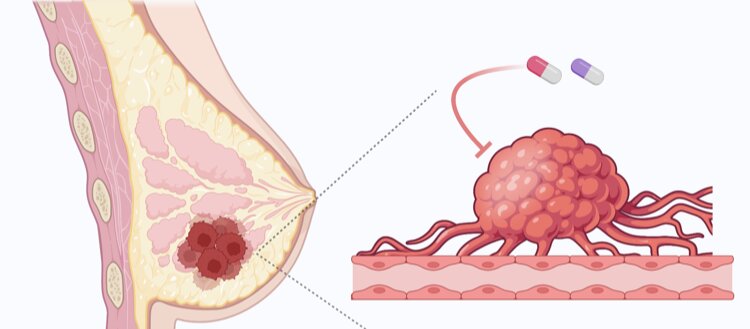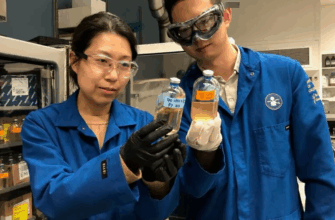In the relentless battle against cancer, scientists have often dreamed of a weapon that not only strikes down the enemy but also rallies the body`s own defenses. Recent research from the Journal of Medicinal Chemistry suggests this dream might be closer to reality with the development of a novel gallium-based compound, designed to be a true double agent: directly lethal to cancer cells and a potent activator of the immune system.
The Elusive Enemy: Cancer`s Cloak of Invisibility
For decades, cancer has proven to be a notoriously cunning adversary. Beyond its ability to proliferate unchecked, one of its most insidious tricks is its capacity to evade detection by our immune system. Tumor cells, often mutated versions of our own, learn to wear a sophisticated cloak of invisibility, preventing the body`s natural defenders – T-cells, NK cells, and macrophages – from recognizing them as a threat. This immunological blindness is a major hurdle in effective cancer therapy, leading to recurrence and resistance to treatment.
Gallium`s Gambit: A Dual-Action Strategy Unveiled
Enter the latest contender: a sophisticated gallium complex meticulously engineered with organic ligands. Gallium, a curious metal not naturally found in the human body, has long intrigued medical researchers due to its ability to mimic iron in biological systems. Cancer cells, being fast-growing and metabolically active, have an insatiable appetite for iron, which gallium can exploit. However, previous gallium-based therapies often faced challenges related to systemic toxicity or limited efficacy.
What makes this new compound particularly noteworthy is its dual mechanism of action. Firstly, it exhibits direct cytotoxicity, meaning it directly poisons and kills cancer cells. In laboratory experiments, it demonstrated significant efficacy against aggressive forms, including breast, pancreatic, and cervical cancer cells. This direct assault is a crucial front in the war against tumors.
The “Immunogenic” Twist: Turning Traitors into Targets
But the true marvel of this new gallium compound lies in its second, more sophisticated, action: it triggers a process known as immunogenic cell death (ICD). Imagine cancer cells as spies hiding in plain sight. Traditional chemotherapy might eliminate some spies, but without alerting the guards, new ones can still infiltrate. ICD is essentially forcing these dying cancer cells to wave a giant, flashing “I am a threat!” flag, making them visible to the immune system.
How does it achieve this? As cancer cells succumb to the gallium compound, they undergo specific changes:
- Calreticulin Translocation: A protein typically found inside the cell, calreticulin, moves to the cell surface. This acts as an “eat me” signal, flagging the dying tumor cell for engulfment by professional phagocytes like dendritic cells.
- ATP Release: Adenosine triphosphate (ATP), usually the energy currency within cells, is released into the extracellular space. Here, it acts as a “danger signal,” attracting immune cells to the tumor site.
- Other “Alarm Signals”: The compound also induces the release of other molecular patterns that collectively orchestrate a robust immune response.
These cellular distress signals transform the dying cancer cells from silent victims into a powerful vaccine. The immune system, once blind to the tumor, now learns to recognize and actively attack the remaining cancer cells, potentially leading to a more durable and systemic anti-tumor response. It`s like teaching the body`s own defense force to hunt down any surviving or metastatic cancer cells, rather than just relying on a direct chemical bombardment.
Beyond the Petri Dish: Promising Early Results
The researchers didn`t stop at simple two-dimensional cell cultures. They pushed the boundaries by testing the compound on three-dimensional tumor spheroids, particularly those derived from cervical cancer. These spheroids are far more representative of actual tumors within the body, mimicking their complex architecture and microenvironment. The results were remarkably encouraging: even at low concentrations, the new gallium complex completely annihilated these tumor spheroids.
This success in 3D models offers a significantly stronger indication of potential efficacy in living organisms, moving us a step closer to human application.
The Road Ahead: A Glimmer of Hope for Combination Therapy
This novel gallium compound stands out as one of the first to successfully combine the direct obliteration of cancer cells with the critical activation of an immune response. This “dual effect” positions it as a highly promising candidate for combined chemo-immunotherapy, especially for metastatic cancer – the stage where cancer has spread and is most challenging to treat.
Imagine a future where this compound could be used alongside existing immunotherapies or targeted drugs, synergistically enhancing their effects and overcoming resistance. While human clinical trials are still on the horizon, these initial findings are a significant stride forward, igniting optimism in the global scientific community.
The ongoing fight against cancer is rarely a one-hit wonder; it`s a strategic chess match requiring innovative approaches. This gallium compound, by forcing cancer to reveal itself before delivering the final blow, represents a clever new move on the scientific chessboard.









